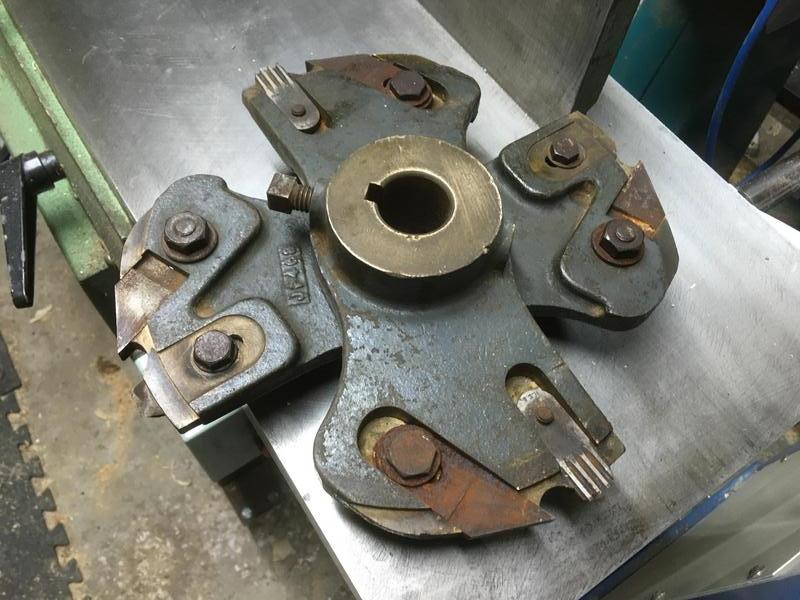Terrytpot
Established Member
They are currently showing out of stock at Axi so that may be the case for a while.As far as I'm aware, the only new dado stack you can buy in the UK is the one from CMT


They are currently showing out of stock at Axi so that may be the case for a while.As far as I'm aware, the only new dado stack you can buy in the UK is the one from CMT

Trevanion
What it the thickness of the groover you linked to, looks a lot thicker than a standard TS blade. With a standard blade on my TS (AXI AW10BSB2) there is only approx 1mm of spare thread once the the locking nut is fitted, so anything thicker than a standard blade would mean the nut not being fully on the arbour.






The key question should be Why were dado arbours banned for multi-person workshops in the UK. The answer is that too many people were losing the use of their limbs due to accidents with dado blades.
Its time to strike some balance in this old thread.

Any overhead guard such as this one will guard a dado blade to the extent required by HSE.In practice few if any dado blades are used with guarding. I have not seen any guards available on the market. There might be some however.
Why is a dado stack more dangerous than a normal blade or a Groove cutter? Because of the missing riving knife? I think if you do non-through cuts the chance of kickback is much lower. Or what type of accidents are dedicated to the use of a dado stack?
Hi,only ressurecting this thread as I'm currently contemplating throwing ££'s in the direction of a new Table saw by Harvey although the colour of it will depend on who I goto for one as there seems to be more than one retailer in the UK now and all of them
seem to have the option of an arbour capable of using dado sets. If the op of this thread had wanted his groove to be fairly distant from the edge of his workpiece I don't see the groovers mentioned above being much use and would personally stick to the advice of either cutting each edge of his groove with a saw blade then hogging out the center with either repeated cuts with the same blade or to dig out a router and a straight edge for the job.
Getting back to the dado sets though, as Axminster and Baileigh are selling Harveys that can use them..does anyone have or use them and have an opinion on them?
Still early days for me with a hunk of research yet to be done and stock levels would also need to be accounted for but here you go:Can you tell me what uk suppliers you are looking at for this saw..
Unfortunately you then forget everything you learned as soon as you decide to make a YouTube video it seems.in most places in the US and in Canada, you learn how to use a table saw safely in high school shop class
dado stacks are frowned upon in europe by almost everybody
Still early days for me with a hunk of research yet to be done and stock levels would also need to be accounted for but here you go:
Axminster Trade AT254LTS Table Saw is a fairly low spec Harvey and theres also this offering :
https://www.baileighindustrial.co.uk/entry-level-cabinet-saw-ts-1040e-30-1
Still early days for me with a hunk of research yet to be done and stock levels would also need to be accounted for but here you go:
Axminster Trade AT254LTS Table Saw is a fairly low spec Harvey and theres also this offering :
https://www.baileighindustrial.co.uk/entry-level-cabinet-saw-ts-1040e-30-1
Enter your email address to join: